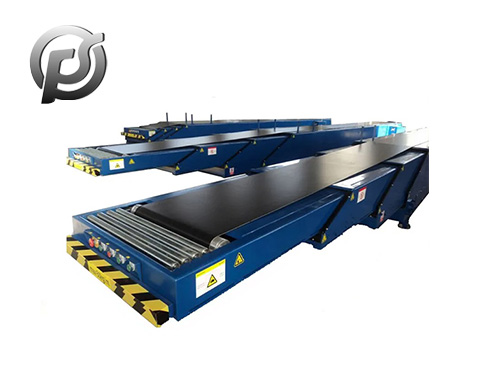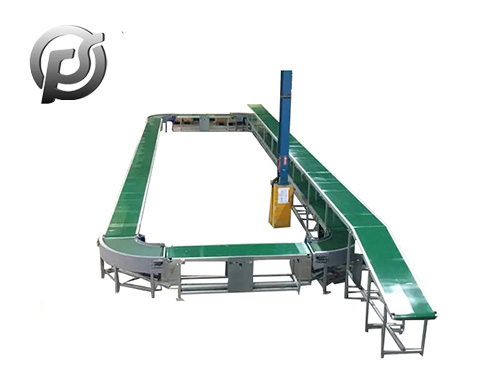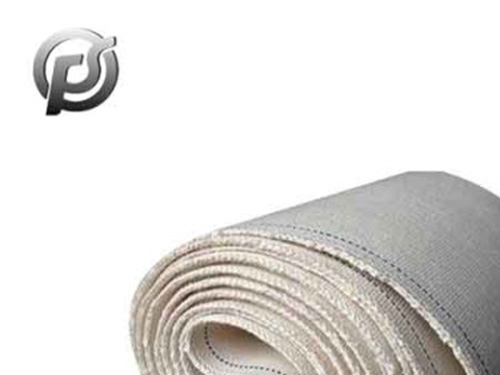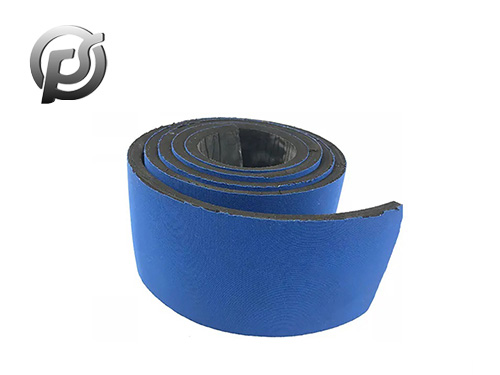A1 Subject content and scope of application
This standard specifies the determination method of elastic modulus of wire rope core
conveyor belt.
The elastic modulus measured in this standard can be used for belt conveyor design and selection, and can be used to judge the physical and mechanical properties of the conveyor belt.
A2 Test Principle
A sinusoidal load ranging from 2% to 12% of the tensile strength of the strip is applied to the sample cut longitudinally from the full-thickness strip. Generally, the curve of the function relationship between the expression load and the elongation was recorded for 200 cycles, and then the elastic modulus was calculated according to the curve.
A3 device
A3.1 Dynamic tensile testing machine
The machine should be able to apply at least 12% of the tensile strength of the band to the sample. At the same time, the machine should be able to apply a periodic sinusoidal load of 2%-12% of the tensile strength of the band (the value of the tensile strength of 2%-12% of the band is determined by the nominal tensile strength of the test band).
A3.2 Elongation tester and recorder
The elongation tester and recorder are the same as in 4.2 and 4.3 of this standard.
A4 sample
A4.1 Shape and Size
The sample is rectangular. From the full thickness of the belt along the longitudinal cut, sample length at least twice the length required for clamping plus 300mm, sample width according to the provisions of GB/T 9770, as follows:
a. When the spacing of wire rope is 10mm, the width should be 50mm; Including five wire ropes.
b. When the spacing of wire ropes is 12mm, the width should be 48mm, including four wire ropes.
c. When the spacing of wire ropes is more than 15mm (including 15mm), the width should contain three wire ropes, whose value is 3P (P is the spacing value). When the sample is of the above width, the wire rope should be published symmetrically along the width when the sample is cut (see Figure, A1).
A4.2 Sample quantity and state adjustment
The number of samples shall be the same as the state adjustment in Article 5.2 of this standard.
A5 sample preparation and state regulation
Remove part of the clamping part of the sample from the thickness of the covering layer, so that the remaining thickness of the upper and lower covering layer is 3mm.
Accurately measure the width of the specimen within the standard distance.
The sample parking environment and parking time shall be the same as Article 5.3 of this standard.
A6 test procedure
The test procedure is the same as Article 6 of this standard, but when the test is 150 times, it is necessary to write once every 10 weeks to observe whether the two adjacent figures coincide until they coincide.
 Custom Conveyor Belts: Enhancing Efficiency and Productivity
Custom Conveyor Belts: Enhancing Efficiency and Productivity
 Stone Belt Conveyor: Efficient Material Handling Solution for Mining and Construction
Stone Belt Conveyor: Efficient Material Handling Solution for Mining and Construction
 Exploring the Dynamics of Conveyor Belt Manufacturing in China
Exploring the Dynamics of Conveyor Belt Manufacturing in China
 PE Conveyor Belts: Characteristics, Applications, and Advantages
PE Conveyor Belts: Characteristics, Applications, and Advantages